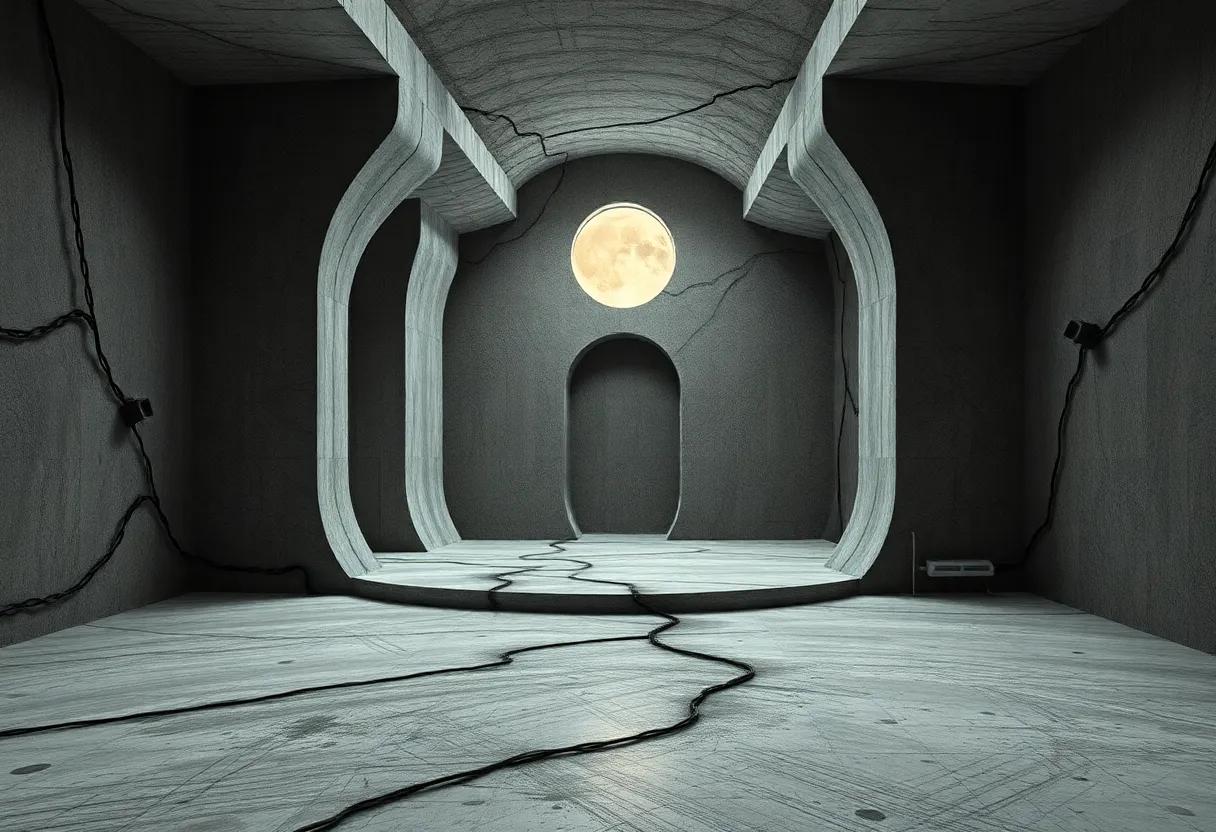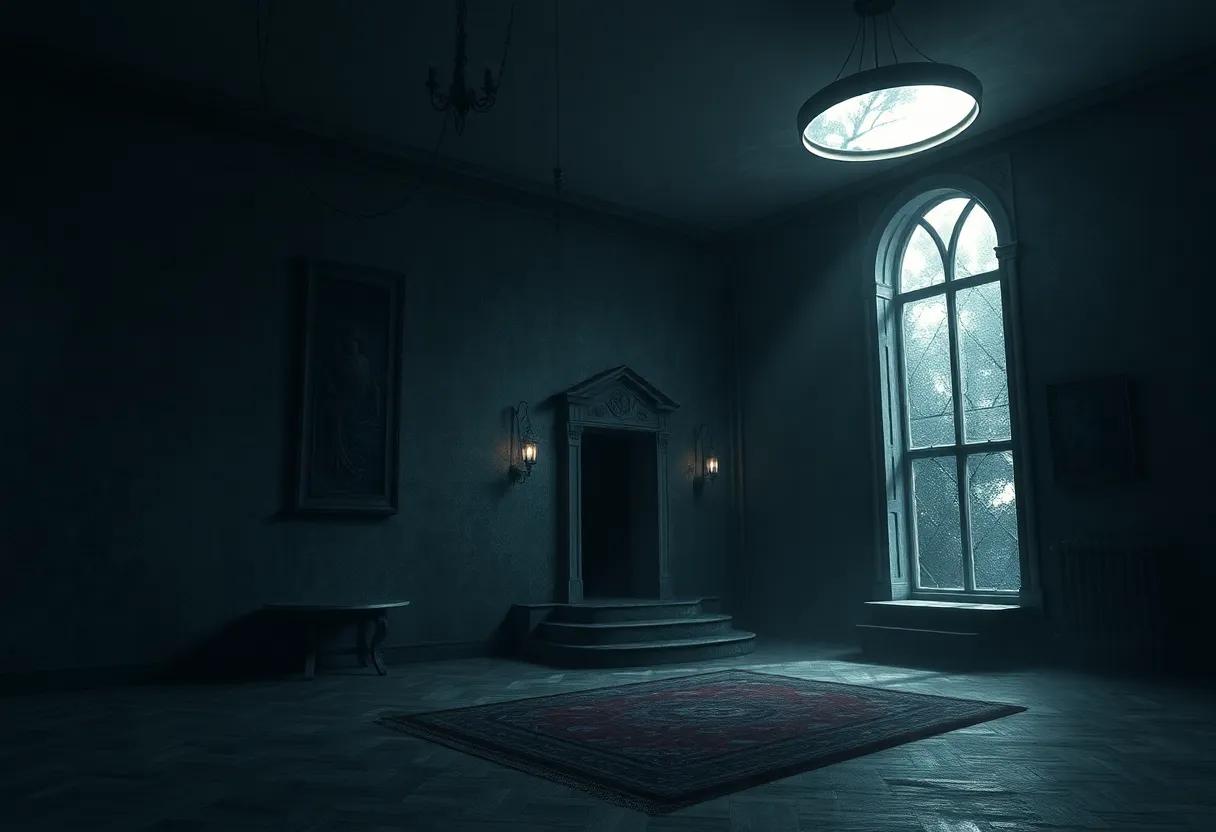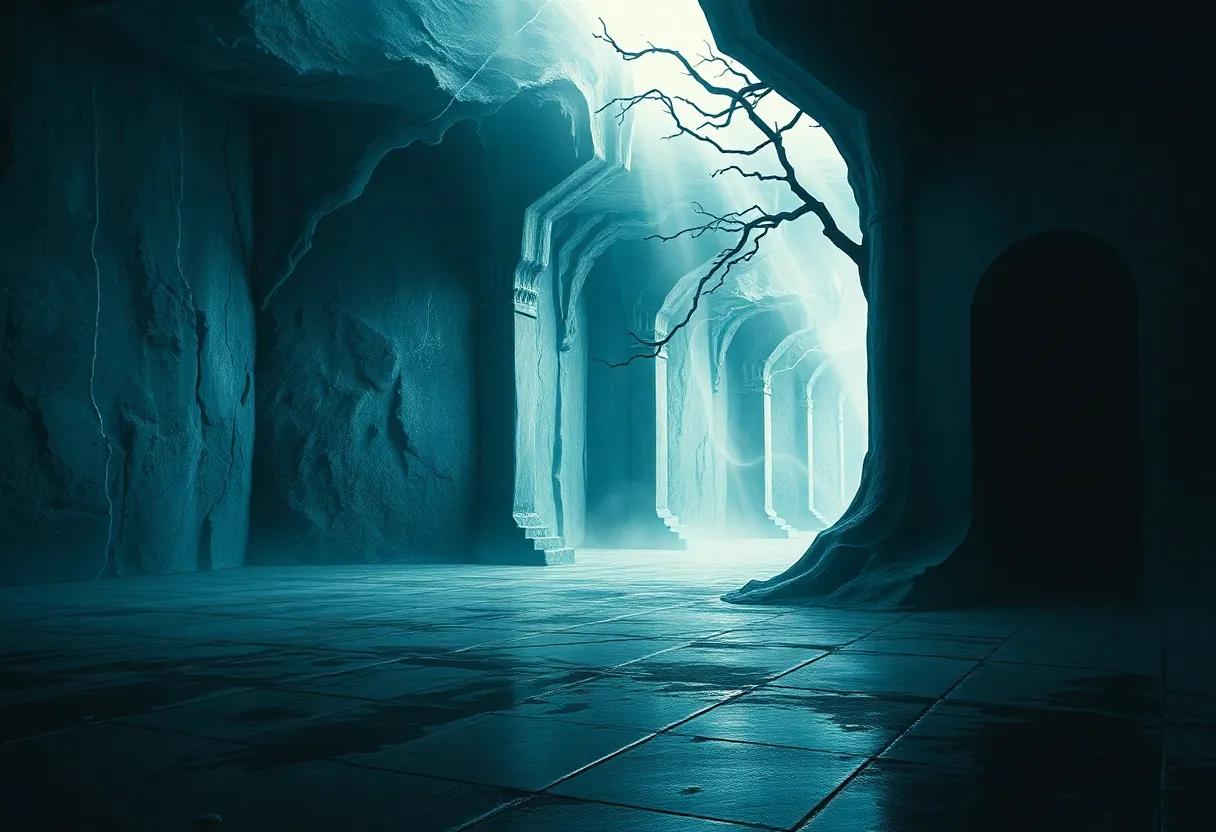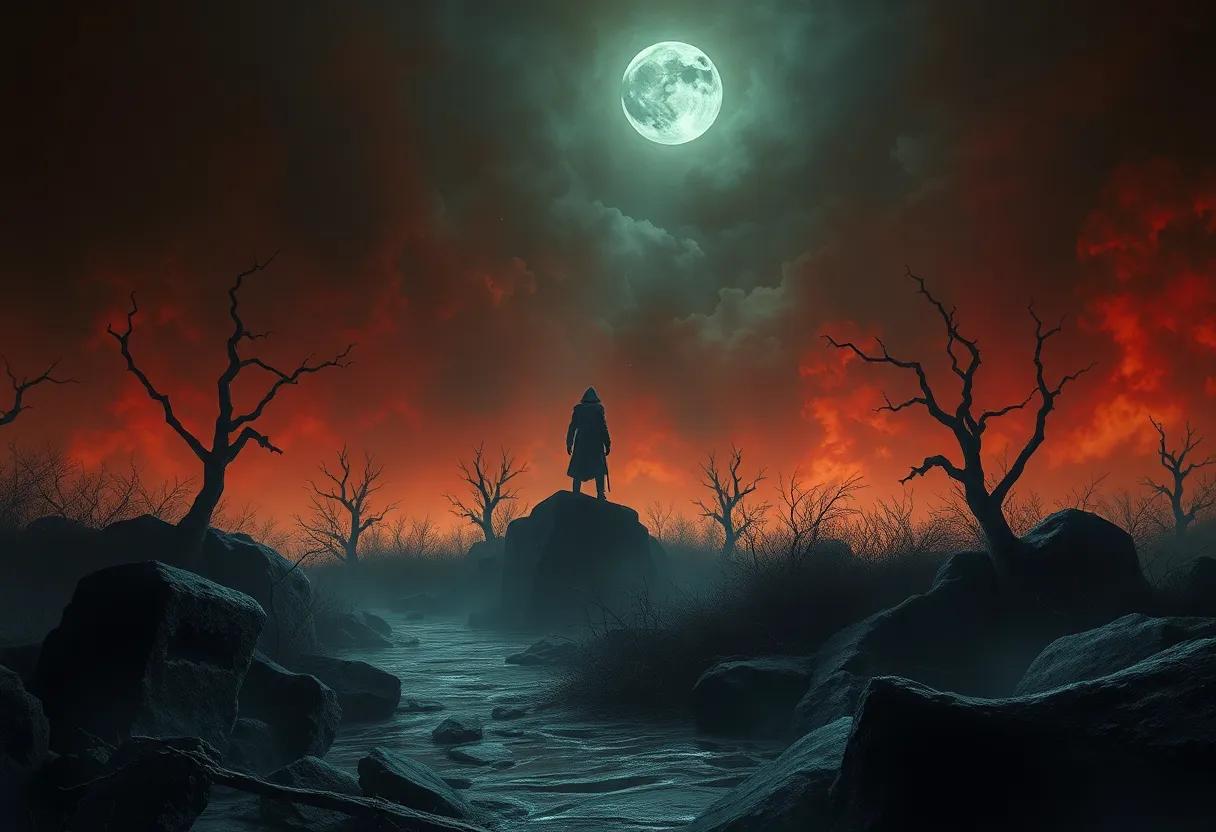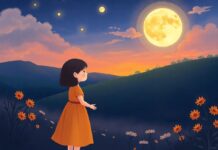In the dimly lit corridors of supernatural fiction, Arthur MachenS works stand as enigmatic doorways to realms where the ordinary brushes against the uncanny. invites readers to step beyond the familiar and examine the subtle artistry and haunting atmosphere that define Machen’s narratives. This review journeys through the delicate interplay of light and darkness in Machen’s storytelling, offering a measured reflection on his enduring influence within the genre. As we navigate these spectral tales,the book sets the stage for a deeper appreciation of the mysterious forces lurking just beyond perception.
The Allure of the Unknown Explored Through Machen’s Distinctive Supernatural Narratives
Arthur Machen’s narratives pull readers into realms where reality blurs gently into the uncanny, capturing the essence of what lurks just beyond human understanding. His stories are not just tales of fright but meditations on the nature of fear itself, a fear born from the allure of the unknown rather than the horrors of the known. This distinctive approach encourages readers to confront their deepest curiosities and anxieties, where the supernatural is both a mirror and a veil-reflecting hidden truths while obscuring clarity. Machen’s work thrives on subtlety, weaving everyday settings with hints of ancient mysteries, inviting the mind to wander through shadows where the familiar becomes unsettlingly strange.
Within these mysterious shadows, Machen offers a rich tapestry of themes and motifs that continually entice exploration:
- The Intersection of Myth and Reality: Exploring how ancient legend seeps into the modern world.
- The Vulnerability of the Human Mind: Depictions of fragile sanity when confronted with incomprehensible forces.
- The seductive Power of the Forbidden: characters drawn irresistibly toward unknown realms despite grave risks.
| Story | Supernatural Element | Atmosphere |
|---|---|---|
| the White People | Mysterious Otherworldly Rituals | Eerie and Ethereal |
| The Great God Pan | Forbidden Knowledge, Demonic Presence | Chilling and Ominous |
| The Novel of the Black Seal | Ancient Cults and Dark Rituals | Cryptic and foreboding |
A Closer Look at the Symbolism and Themes Interwoven in Machen’s Timeless Stories
Arthur Machen’s narratives are a rich tapestry where the mundane and the mystical seamlessly intertwine. Beneath the surface of his eerie landscapes lies a profound meditation on the fragile boundary between reality and the unknown. His stories frequently enough evoke a sense of cosmic insignificance, reminding readers that beneath the veneer of daily existence lurks an ancient, inscrutable power. Machen masterfully employs symbolism to evoke this unsettling reality-the recurring motifs of labyrinths, ancient ruins, and hidden societies serve as metaphors for the obscure depths of human consciousness and the mysteries of the universe itself.
His exploration of themes such as spiritual awakening, forbidden knowledge, and the confrontation with the uncanny displays an almost mystical reverence for the unknown forces shaping existence. Within this framework, characters frequently wrestle with the costs of piercing the veil of ordinary life, often paying a steep price for their glimpses into hidden realms. Consider the table below, which highlights key symbols and their thematic resonances throughout Machen’s oeuvre:
| Symbol | Thematic Meaning |
|---|---|
| Ancient Ruins | Connection to lost knowledge and forgotten civilizations |
| the Labyrinth | Journey into the subconscious and confronting inner fears |
| Hidden Societies | Secret wisdom and the duality of enlightenment and danger |
| Shadowy Figures | The embodiment of the unknown and primal fears |
How Atmosphere and Setting Enhance the Eerie Quality of Machen’s Tales
Arthur Machen’s supernatural tales thrive in the liminal spaces where reality blurs into the uncanny. His meticulous construction of dread-filled environments transforms ordinary locales into unsettling arenas where the unknown lingers just beneath the surface. Whether it’s the fog-shrouded streets of London or the misty Welsh moors, these settings act as more than mere backdrops; they are characters in their own right, breathing an oppressive stillness and disquiet into the narrative.Machen often employs natural elements-*twisted trees, whispering winds, half-seen shadows*-to evoke a palpable atmosphere that unsettles readers before the supernatural even makes its presence known.
In dissecting Machen’s use of atmosphere, several key techniques emerge that effectively heighten the eerie tone:
- vivid sensory details: Machen’s attention to sound, smell, and texture creates immersive experiences that feel disturbingly tangible.
- Contrast between the familiar and the alien: Everyday settings suddenly become sinister, forcing the reader to recalibrate their sense of safety.
- Subtle, slow-building tension: The gradual unveiling of the uncanny mirrors the encroachment of darkness, drawing the reader deeper into unease.
| Setting Element | Effect on Atmosphere |
|---|---|
| Misty Forest | Cloaks scenes in ambiguity and isolation |
| Desolate Village | Evokes forgotten histories and lingering spirits |
| Ancient Ruins | Connects the present with long-buried secrets |
| Quiet night Streets | Amplifies vulnerability and invisible threats |
Analyzing the Psychological depth Behind the Characters’ Encounters with the Unseen
Arthur Machen’s narratives delve deep into the human psyche, exposing the fragile boundaries between reality and the unseen. His characters do not merely encounter supernatural forces; they confront the inner recesses of fear, curiosity, and existential dread. Within these encounters, Machen crafts a subtle psychological tension that explores how individuals interpret and often misinterpret the unknown. The unseen acts as a mirror,reflecting deeply buried traumas and latent desires,transforming otherworldly experiences into profound psychological revelations.
When examining these moments, it becomes clear that the supernatural elements serve more than mere plot devices-they function as catalysts for internal conversion. The following elements frequently emerge within these character experiences:
- Dissolution of reality: Characters face a crumbling sense of what they know to be true.
- Heightened sensory perception: Altered states where the boundary between the physical and intangible blurs.
- Moral ambiguity: The unseen challenges the binary of good versus evil.
- Isolation and introspection: Emphasizing the loneliness inherent in confronting forces beyond comprehension.
| Character | Nature of Encounter | Psychological Effect |
|---|---|---|
| John Silence | Spiritual visions | Reinforced faith & doubt |
| The Narrator of “The White People” | Forbidden knowledge | Anxiety & transformation |
| Lucian Taylor | Contact with dark entities | Paranoia & obsession |
The Influence of Folklore and Mythology in Shaping Machen’s Imaginative Worlds
Arthur Machen’s literary landscape is a rich tapestry woven with threads borrowed from ancient folklore and mythology. His stories frequently enough evoke the timeless mysteries lurking in the margins of cultural memory, where legends and folk beliefs converge to form powerful motifs. These elements serve as more than mere background; they act as catalysts propelling his supernatural narratives, imbuing his imagined worlds with a profound sense of the uncanny. Machen doesn’t just retell old tales-he reanimates them, tapping into the primal fears and wonders that folklore stirs within the collective consciousness.
Central to his creative process is the way he blends mythical archetypes with the subtle distortions of reality, creating a liminal space where ordinary settings become gateways to otherworldly realms. Consider how his use of mythic symbols, from ancient pagan rituals to mysterious Celtic legends, deepens the reader’s immersion and intensifies the eerie atmosphere. This interplay can be tersely illustrated:
| Folklore Element | Effect in Machen’s Storytelling |
|---|---|
| Mysterious Rites | Heightened suspense and mysticism |
| Mythical Beings | Blurred boundary between reality and fantasy |
| Ancient Symbols | Anchor to forgotten,primal fears |
| Folkloric Settings | Creates immersive atmospheres |
- Revitalizes cultural myths as living, breathing elements within modern narratives
- Employs the unknown embedded in folk stories to evoke dread and curiosity
- Builds timelessness through connecting contemporary characters with ancient horrors
Narrative Techniques That Build Suspense and Unease Without Relying on Gore
Arthur machen masterfully conjures a haunting atmosphere through subtlety and suggestion, relying less on explicit visuals and more on what lurks beneath the surface of his prose. his use of ambiguous descriptions and carefully crafted environments invites the reader to imagine the unspeakable, creating a fertile ground for dread. Shadows become characters themselves, whispering secrets that unsettle without ever revealing their full nature. The pacing in Machen’s stories frequently enough mirrors the gradual tightening of a noose, where moments of calm are pregnant with impending doom, heightening tension through contrast rather than shock.
Integral to Machen’s technique is his manipulation of psychological unease,often positioning his characters-and readers-at the edge of understanding. Through:
- Unreliable narrators, whose fragmented memories or perceptions cloud reality
- Obscured motivations, hinting at hidden forces without explicit exposition
- Symbolic settings, such as fog-enshrouded woods or crumbling ruins that resonate with primal fears
he crafts a tapestry where fear arises from anticipation and doubt. This deft ambiguity, paired with an almost poetic cadence, leaves enduring uneasiness that lingers well beyond the final sentence.
| Technique | Effect | Example in Machen’s Work |
|---|---|---|
| Ambiguous Descriptions | Evokes imagination-driven fear | “The White People” – The shifting nature of the strange rituals |
| Unreliable Narrators | Creates confusion and doubt | “The Great God Pan” – Fragmented, unsettling perspectives |
| Symbolic Settings | Heightens primal unease | Foggy Welsh landscapes as ominous backdrops |
The balance Between Reality and Fantasy and Its Impact on Reader Interpretation
Arthur Machen’s storytelling thrives in the delicate interplay where the tangible world brushes against the ephemeral veil of the supernatural. His narratives invite readers to navigate a twilight zone where seemingly ordinary settings unravel into realms of eerie suggestion and mystical possibility. This fusion challenges the reader’s perception, creating a fertile ground for diverse interpretations. The subtlety with which reality bleeds into fantasy makes readers question not only the reliability of the narrator but also the very fabric of what they accept as truth within the text. In doing so, Machen crafts an experience that oscillates between the familiar and the uncanny, fostering a profound sense of wonder and dread.
Consider how this tension affects the emotional and intellectual response by breaking down key elements in Machen’s work:
- Ambiguous settings: Frequently enough rural or seemingly mundane places rendered cryptic through atmospheric description.
- Unseen forces: Evoked rather than explicitly detailed, allowing imagination to fill the gaps.
- Psychological depth: Characters serve as conduits for exploring fear, belief, and the unknown.
| Element | Effect on Reader | Example |
|---|---|---|
| Vague descriptions | Stimulates imagination and personal interpretation | “The Great God Pan” |
| Blended realism | Creates a believable yet unsettling atmosphere | “The White People” |
| Unreliable narrators | Challenges certainty and deepens mystery | “The Novel of the Black Seal” |
Key Stories That Exemplify Machen’s Contribution to Early Supernatural Fiction
Arthur machen’s oeuvre is peppered with tales that delve into the uncanny and the mystical, each story serving as a beacon of his unique ability to evoke the eerie and unknowable. Among his most revered works,“The Great God Pan” stands out as a chilling exploration of forbidden knowledge and cosmic horror,blurring the lines between the mortal and the divine. Meanwhile, “The White People” offers a haunting glimpse into pagan rites and childhood curiosity, wrapped in evocative prose that lures readers into an unsettling world where innocence and darkness intertwine. These narratives not only reveal Machen’s flair for atmospheric storytelling but also his philosophical interest with ancient mysteries lurking beneath modern society’s veneer.
Beyond these seminal works, several othre stories reinforce Machen’s legacy within early supernatural fiction. To grasp the full spectrum of his thematic concerns and stylistic innovations, consider this concise overview:
| Story | Theme | Signature Element |
|---|---|---|
| the Inmost Light | Spiritual revelation and transcendence | Poetic mysticism |
| the Novel of the Black Seal | Ancient cults and ancestral terror | Lovecraftian influence |
| The Terror | Psychological dread and isolation | Atmospheric dread |
This tableau captures the diversity within Machen’s stories, demonstrating his skillful melding of folklore, myth, and existential unease. His prose not only unsettles but invites readers to question the boundaries between reality and the shadowy unknown,a hallmark that firmly cements Machen as a pioneer in the realm of supernatural fiction.
Recommendations for Readers New to Machen and Those Seeking Deeper Literary Appreciation
For those just beginning their journey into Arthur Machen’s eerie and evocative world, it’s best to start with his most accessible yet richly atmospheric stories. Works like The Great God Pan and The White People offer not only a glimpse into Machen’s idiosyncratic vision of the supernatural but also provide an entry point into his skillful weaving of folklore with existential dread. These tales balance the uncanny with a narrative clarity that invites readers to savor the unsettling without feeling overwhelmed. Additionally, consider companion reads such as machen’s essays on mysticism or his explorations of ancient mythology, which serve as invaluable context for understanding the depth behind his fiction.
For readers eager to deepen their literary appreciation, engaging with Machen’s work through a thematic or historical lens adds layers of meaning that enrich the experience. Delve into his use of Victorian and Celtic symbolism, or examine how Machen’s prose style – often lush and deliberately archaic – crafts a unique rhythm comparable to poetic incantations. Below is a concise guide to focus your exploration:
| Focus Area | Suggested Approach |
|---|---|
| Thematic Symbols | Trace recurrent images like shadows, underground realms, and ancient gods. |
| Narrative Structure | Analyze how unreliable narrators evoke ambiguity and suspense. |
| Historical Context | Explore Victorian anxieties about science, religion, and the unknown. |
| Language & Style | Appreciate Machen’s layered prose and subtle, hypnotic cadence. |
- Read alongside contemporary authors like H.P. lovecraft for genre comparison.
- Join literary forums or book clubs focused on supernatural fiction for diverse perspectives.
- Revisit stories multiple times; Machen’s nuance frequently enough reveals itself slowly.
The Enduring Legacy of Machen’s Supernatural Tales in Modern Horror Literature
Arthur Machen’s supernatural tales possess a haunting resonance that transcends time, persistently influencing the contours of modern horror literature. His narratives, steeped in a mystical aura and an uncanny portrayal of the unknown, have become a blueprint for weaving subtle dread and cosmic terror. Unlike many who lean heavily on overt shock, Machen’s style thrives on suggestion – inviting readers into a liminal space where reality blurs with the supernatural. this nuanced approach has been embraced and adapted by contemporary authors, who draw from Machen’s ability to evoke fear through atmosphere and implication rather than explicit horror.
Several core elements from Machen’s work continue to echo in today’s genre, including:
- The celebration of ancient myths and hidden histories as sources of terror and wonder.
- The use of rural or seemingly mundane settings that mask darker,otherworldly truths.
- The interplay of innocence and corruption, where the supernatural challenges human understanding.
| Modern Author | Influential Work | machen’s Influence |
|---|---|---|
| Thomas Ligotti | “The Shadow at the Bottom of the World” | Atmospheric dread and cosmic nihilism |
| Caitlín R. Kiernan | “The Red Tree” | Blurring of reality and myth |
| Jeff VanderMeer | “Annihilation” | Eerie landscapes and cosmic mystery |
Through these threads,Machen’s legacy remains woven into the fabric of modern horror,continually shaping how writers explore the unsettling fringes of human experience. His tales remind us that true horror doesn’t always scream – sometimes, it lurks quietly just beyond the light, waiting for a curious mind to uncover it.
Exploring the Author Behind the Shadows and His Place in Literary History
Arthur Machen’s literary presence is like a faint echo from the mist, a voice frequently enough overshadowed by more flamboyant contemporaries yet undeniably profound in its subtlety. His work is steeped in an almost mystical reverence for the archaic and the uncanny, drawing readers into a world where the veil between reality and the supernatural is dangerously thin. Unlike many of his peers who favored overt terror, Machen’s stories whisper their dread through atmospheric build-up and symbolic allusion, crafting narratives that linger long after the last page is turned. In exploring his place within literary history, we recognize an author who bridges romantic imagination with early modernist sensibilities, laying groundwork that would influence horror writers for generations to come.
Key Elements of Machen’s Literary impact:
- Rediscovery of Celtic and Welsh mythologies as a foundation for uncanny storytelling.
- Pioneering the subtle horror genre that favors suggestion over explicitness.
- Inspiring notable authors like H.P.Lovecraft and Algernon Blackwood with his unique blend of mysticism and horror.
| Aspect | Contribution |
|---|---|
| Mythology Integration | informed supernatural with local folklore |
| Narrative Style | Emphasis on atmosphere and ambiguity |
| Historical Influence | Early bridge to modern supernatural fiction |
Exploring Shadows invites us not only to revisit Arthur Machen’s supernatural tales but to peer deeper into the twilight where reality blurs with the uncanny. Whether you are a seasoned fan of the eerie or a curious newcomer, this thoughtful review opens a doorway to understanding the subtle artistry behind Machen’s stories-reminding us that sometimes, the most unsettling shadows are those cast by the mind itself. As the last page turns,one is left with a lingering sense of wonder,and perhaps,an urge to step quietly into the mystic realms Machen so deftly conjures.


